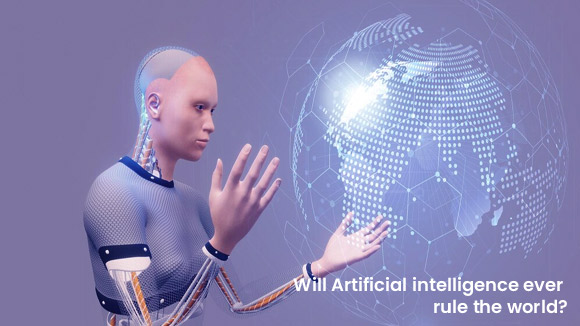The idea of AI governing the world has been discussed in numerous sci-fi stories, and this scenario will probably not happen in reality. Human programmers and organizations develop, supervise and maintain AI systems. However, developing and deploying of the Artificial Intelligence are faced with various ethical issues as prescribed by laws and regulations.

There are several reasons why the idea of AI ruling the world is unlikely:
Human Control: Humans program and employ artificial intelligence systems. To my last knowledge in January 2022, there is still no AI that decides autonomously without any human control.
Ethical Guidelines and Regulations: Ethical considerations in the development of AI are important to the AI community. Currently, governments, organizations and even researches are putting efforts in coming up with proper regulation framework which will help curb this menace.
Accountability and Transparency: Principles under responsibly developed AI include accountability and transparency. AI systems should be designed in a manner wherein their reasoning processes are comprehensible, as well as traceable by developers and organizations.
Public Awareness and Scrutiny: The more people are aware of AI the more scrutinizing public discourse and debate on the ethics of AI. The attention ensures it aligns AI development with societal values/concerns.
Although there are many ethical considerations surrounding AI, the general perspective is that such systems should be developed and utilized towards societal gains without compromising on safety. It places more focus on human-AI cooperation as opposed to AI replacing humans. Society must remain involved in debates surrounding AI ethics, regulation, and policy for the rational deployment of these systems. With advancement of technology, continuous endeavors are taking place to mitigate the fears and ensure that AI remains in the service of mankind.
Interested to get high quality and data secured annotation services ,contact us at https://www.annotationsupport.com/contactus.php

